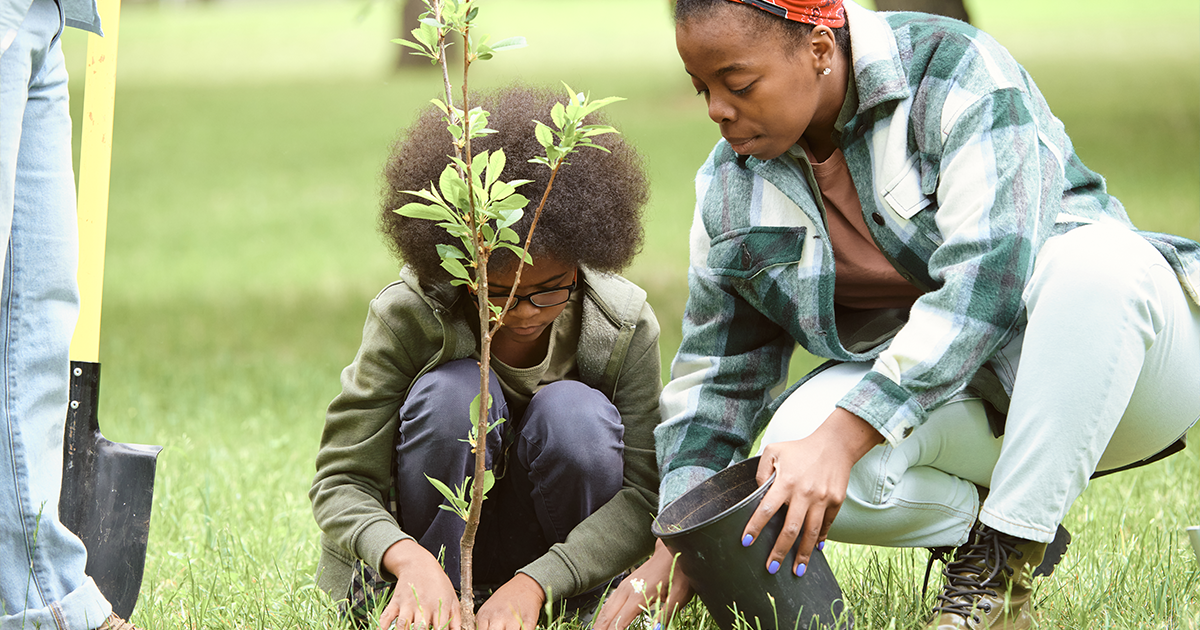Selecting and Planting Trees

Trees produce oxygen, prevent erosion, absorb carbon, and provide food, shade, beauty, and many other things. Simply put, they’re amazing. With all the reasons to plant a tree, all you have to do is pick a variety and get it in the ground!
First, let’s talk about deciduous and evergreen trees. Deciduous trees lose their leaves seasonally, typically in the fall. These trees provide ample shade during the growing season and let sunlight in during the winter. Evergreen trees lose their leaves throughout the year. For this reason, evergreens are wonderful for blocking wind and providing habitat to birds and other small animals year-round. The picture below shows a mix of deciduous and evergreen trees seen in the late fall:

Picking a place for your tree is very important. Positioning deciduous trees strategically on the south side of your house will provide hours of glorious shade all summer long, but if you plant them too close, the roots can wreak havoc in your sewer lines and break your concrete foundation. Trees have massive woody root systems that can extend many feet in all directions from the trunk. If a tree has a thirty-foot wide canopy, you should leave that same area free for their roots.

Trees grow in a variety of sizes and shapes. Do some research to find the tree that fits your needs best. A reputable nursery will tell you exactly how big your tree will get, if it will flower, what kind of fruit it will bear, and how much raking you have to look forward to in the fall. Planting the right tree in the right spot will save you a lot of hassle in the long run.
Trees, like all living things, have a life expectancy. Some, like bristlecone pines, can live for thousands of years, while common shade trees, like maple and ash, can live more than a hundred years. Fruit trees will live for decades, but typically only bear abundant fruit for about twenty years.
Fruit-bearing trees are typically grafted on dwarf root stock, which limits their size at maturity. Even though they’ll stay relatively small, fruit trees require annual pruning to increase yield and make picking easier. Positioning a fruit tree is especially important if you have pets. Many dogs love to eat the fruit that falls from trees, seeds and all. This is particularly bad when they eat fruits that have stony pits, like peaches and apricots. To prevent doggy digestive issues, plant your fruit trees where pets can’t browse.

Another thing to consider is how messy the tree will be. Evergreens, like pines, have needles that acidify the soil and can hinder other plants from growing under them, possibly making a bare patch on the ground. Many shade trees produce a multitude of small fruits that can litter your yard and rain gutters.
There are many factors to consider when picking the type of tree that will fit your needs. Whether you want beautiful flowers in the spring, juicy fruits in the summer, colorful foliage in the fall, or picturesque boughs in the winter, now is the time to plant a tree.





